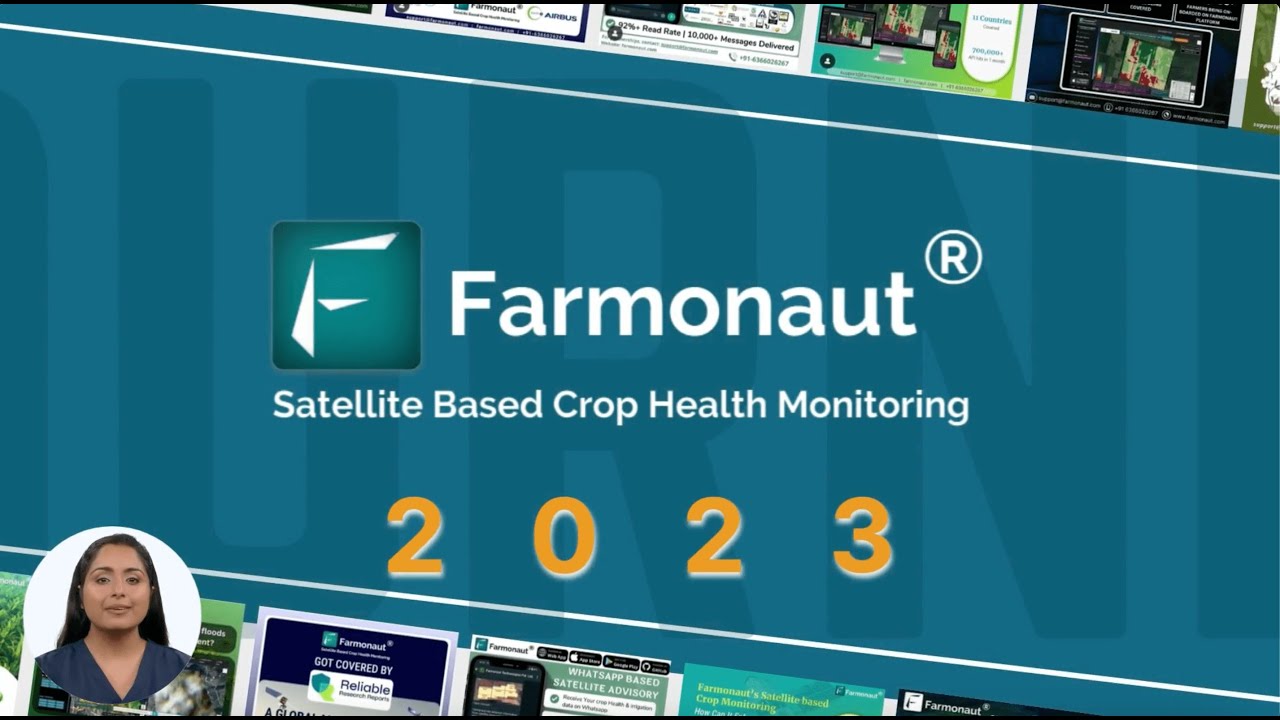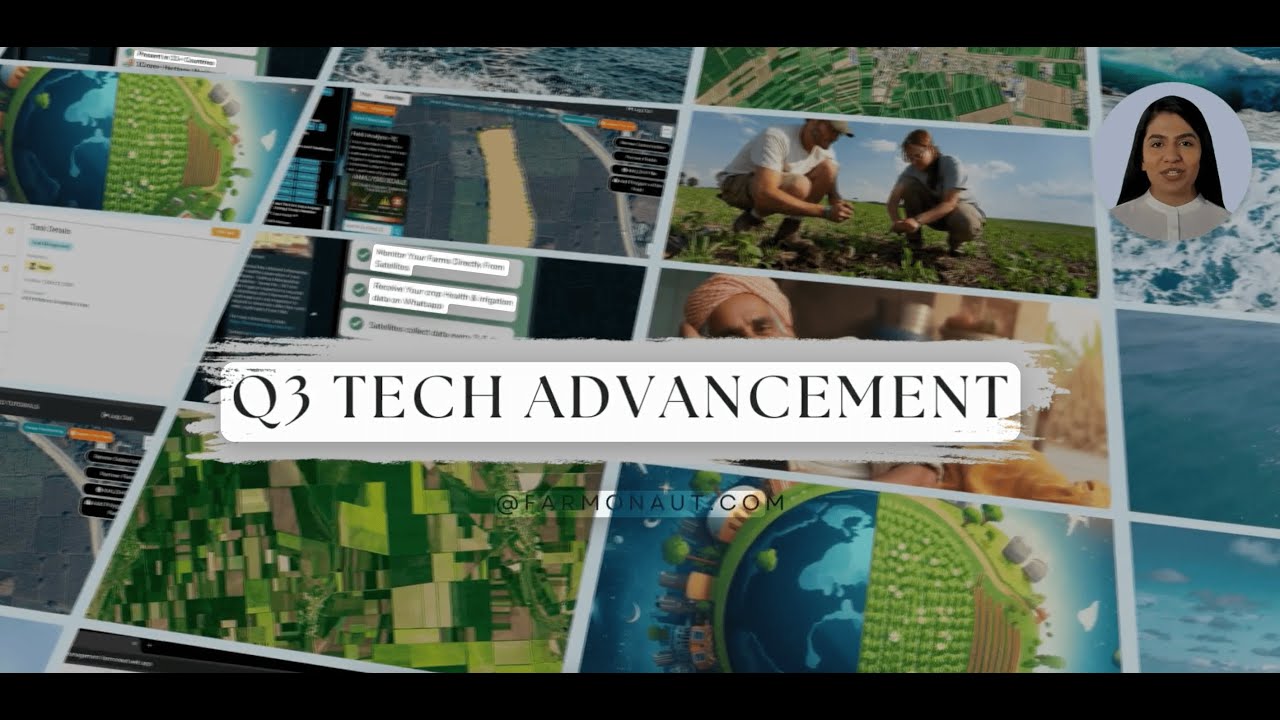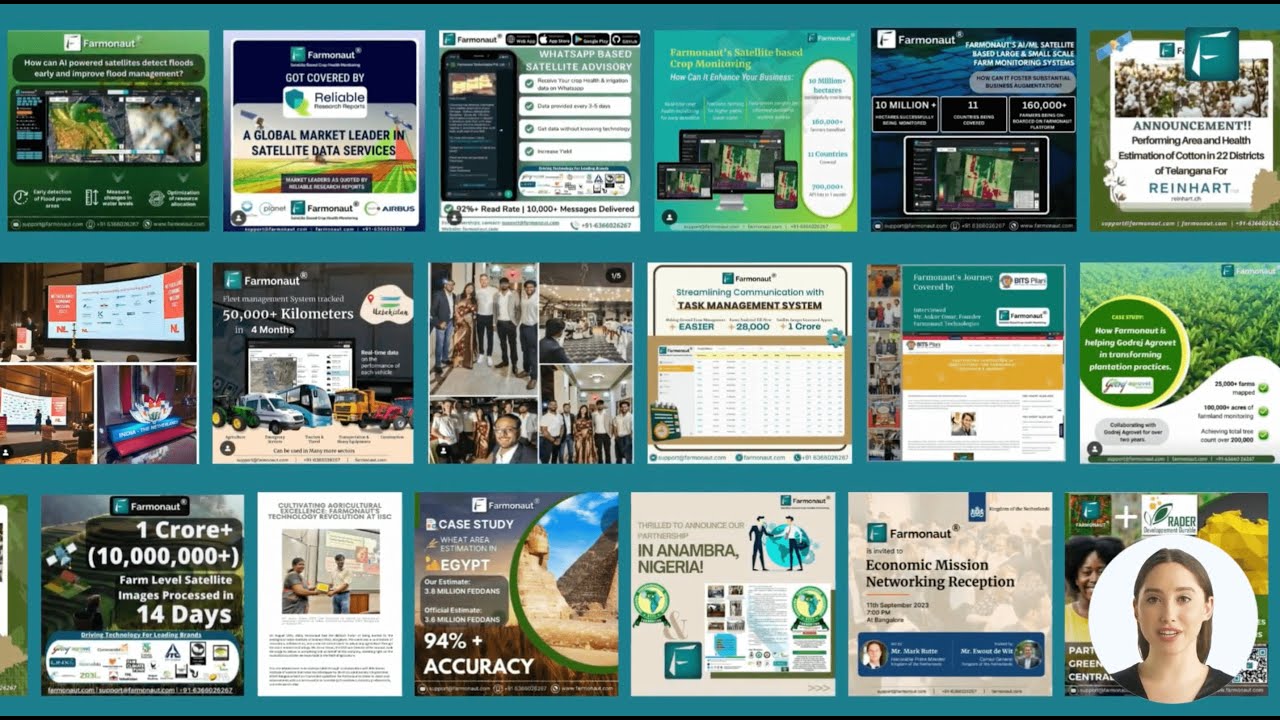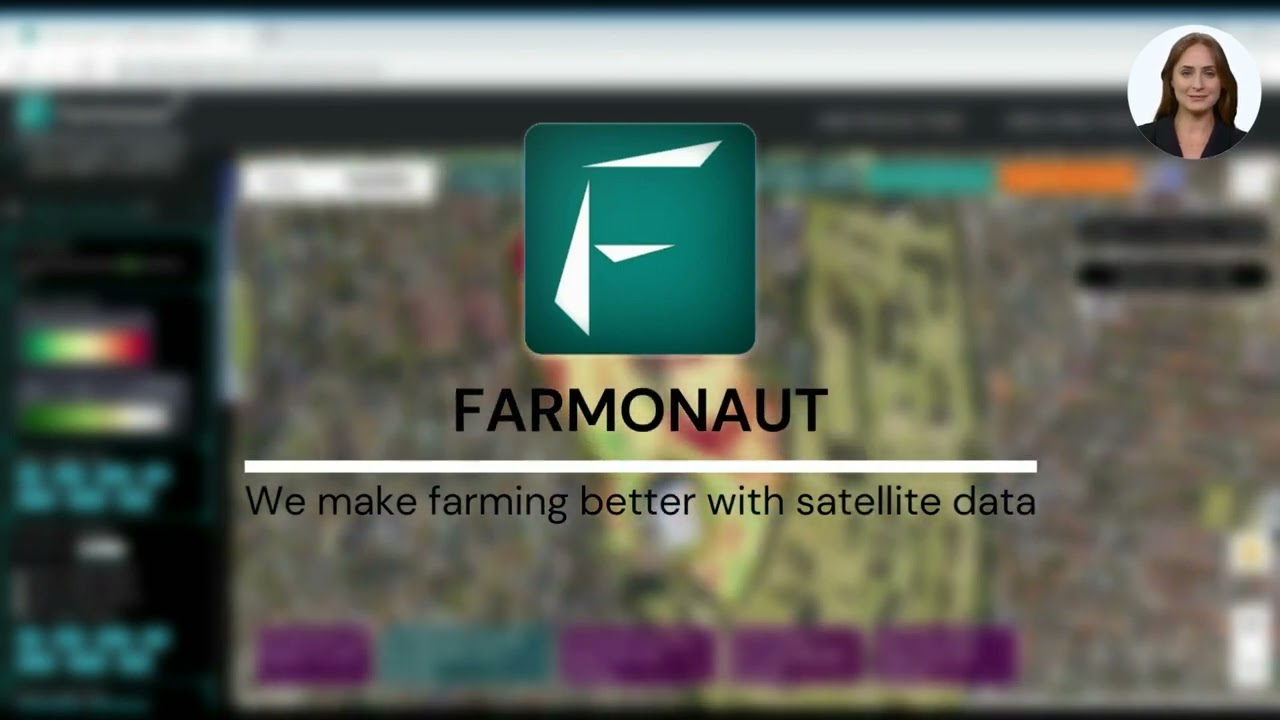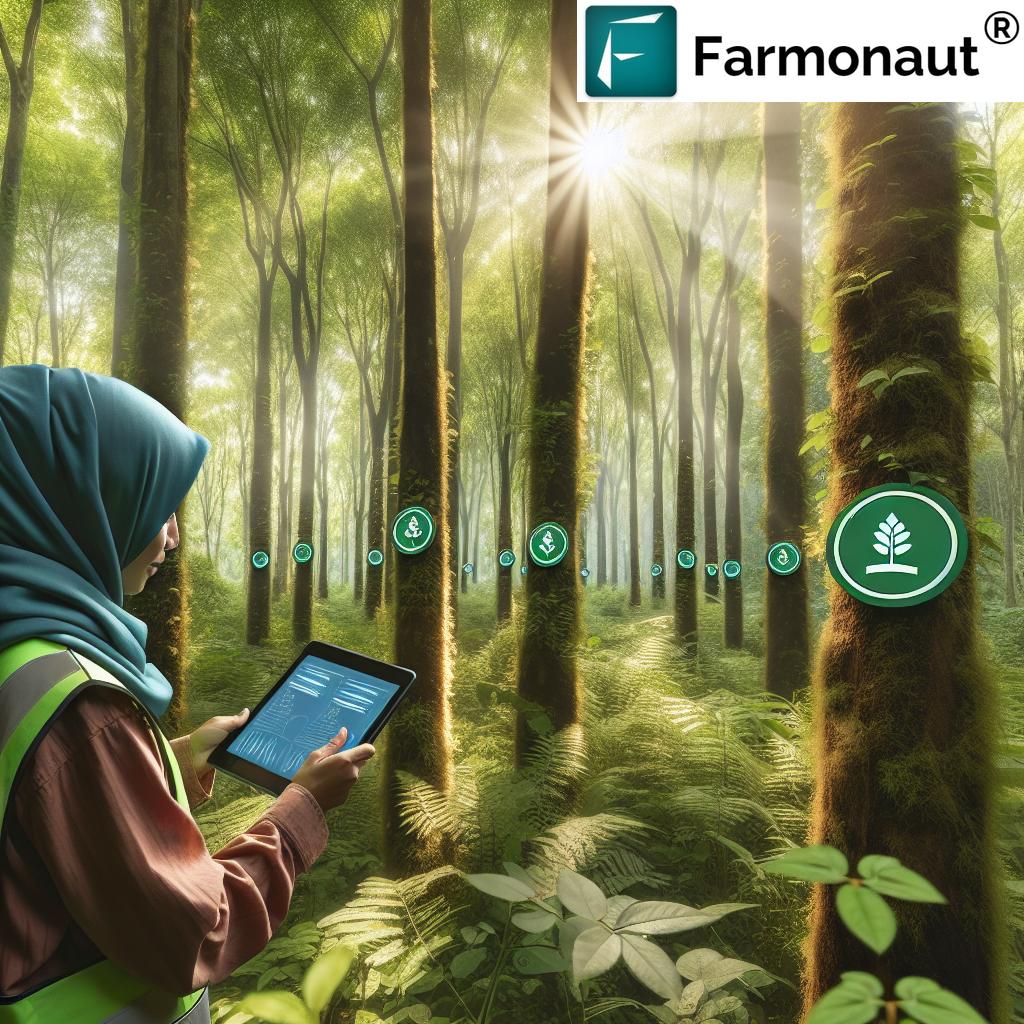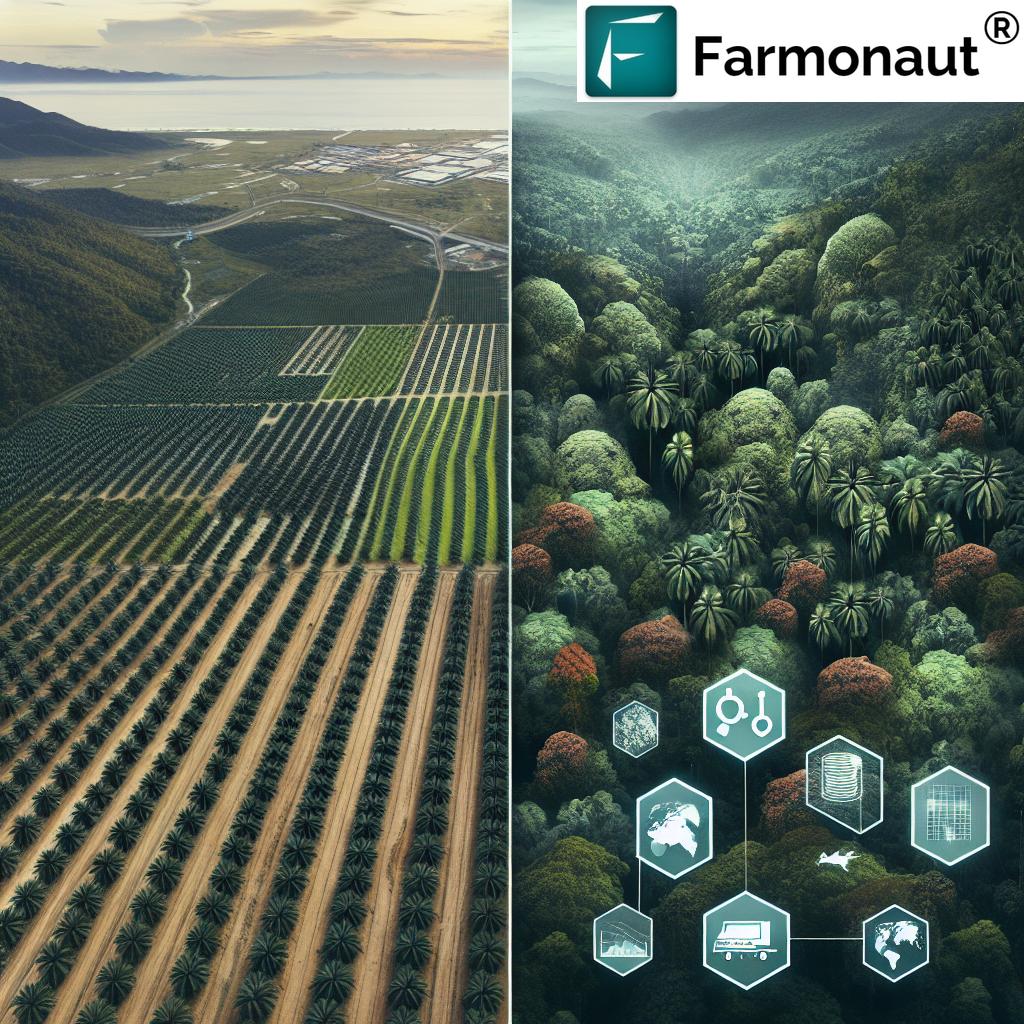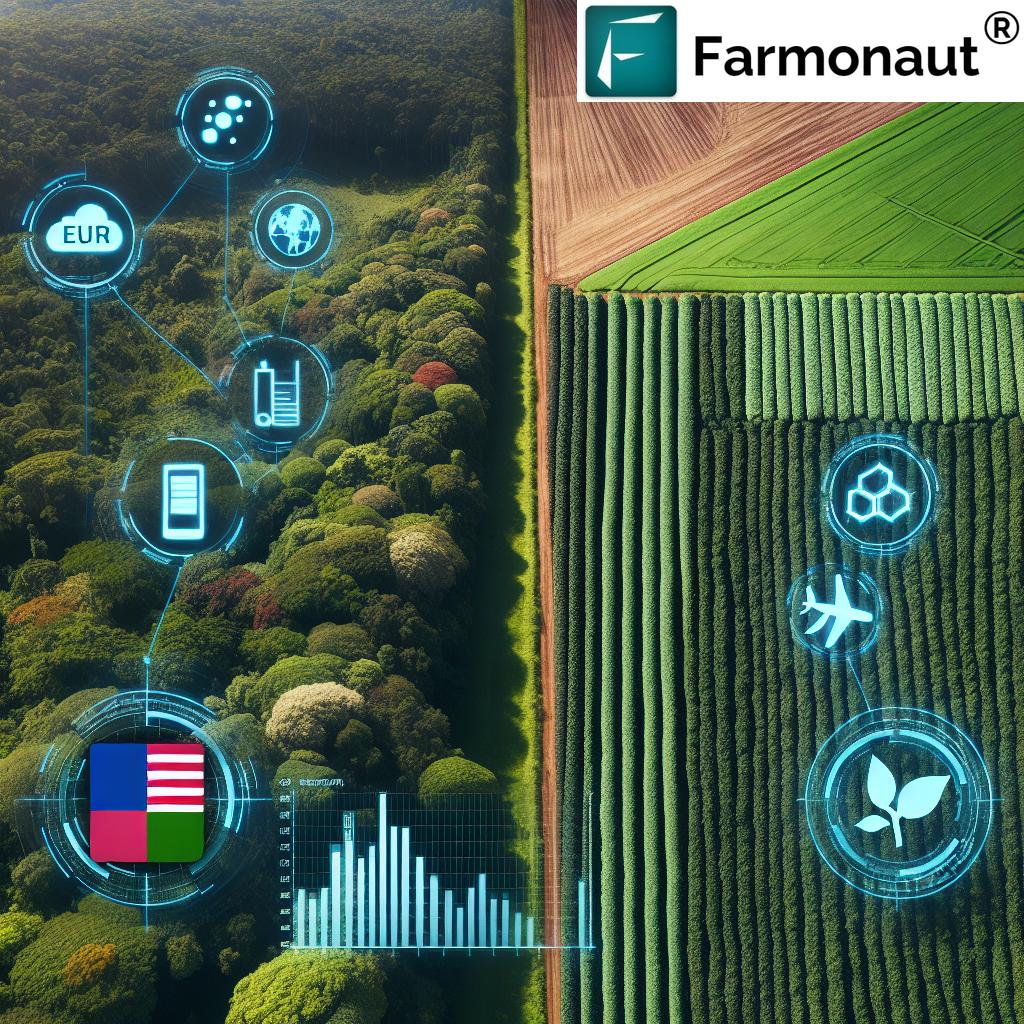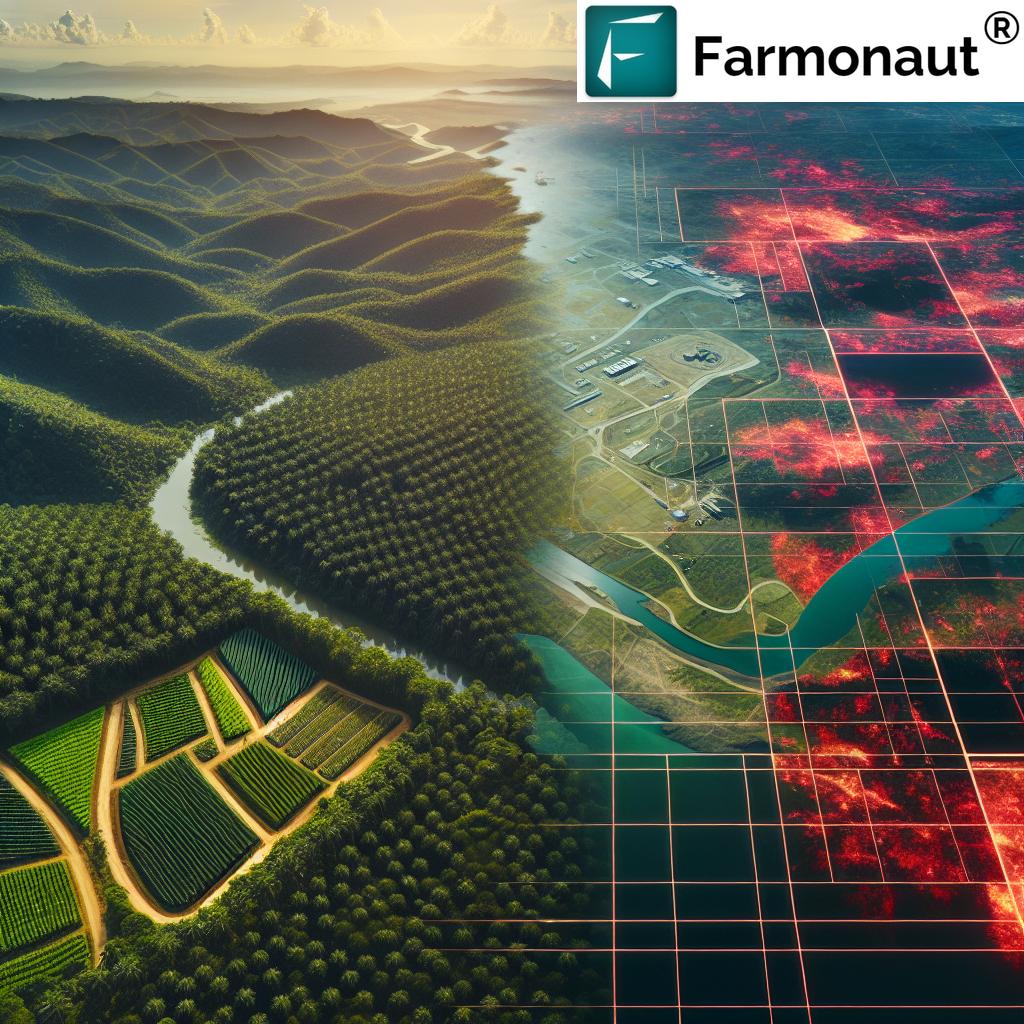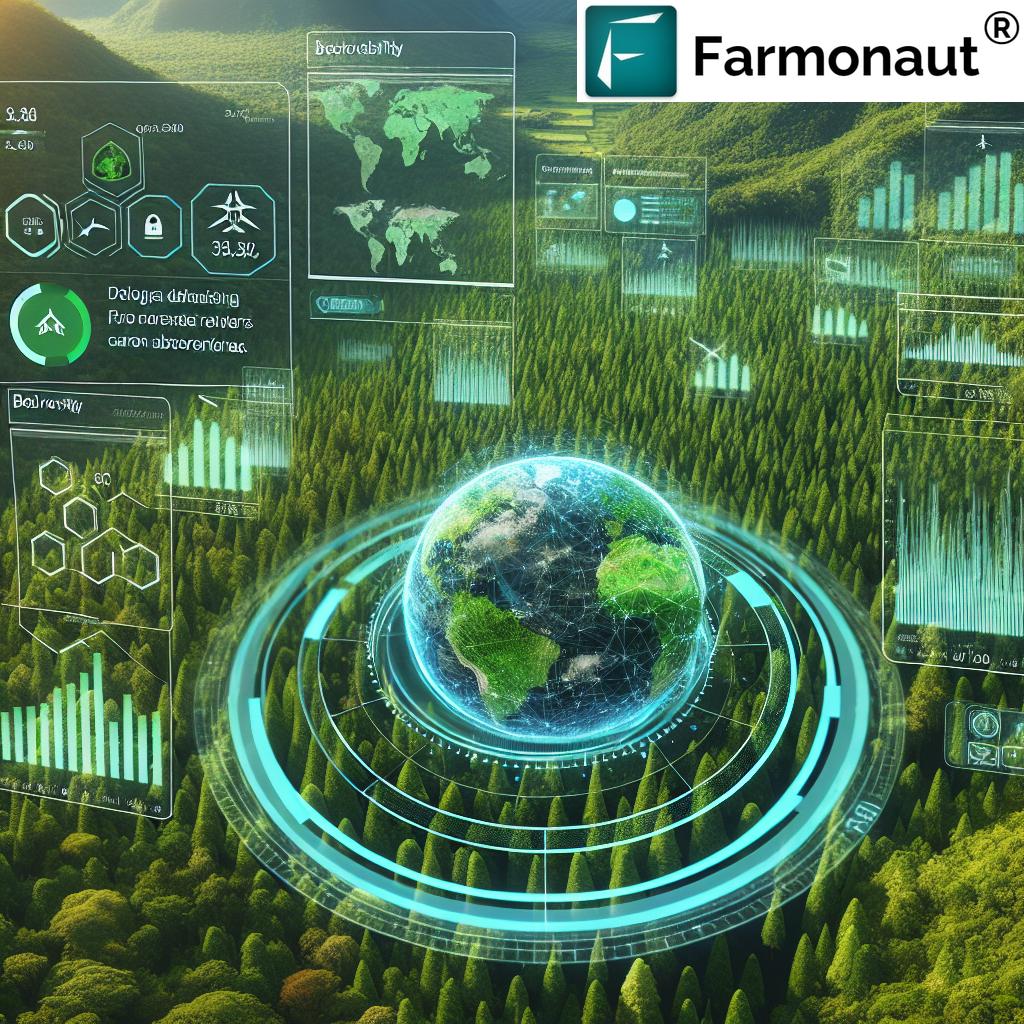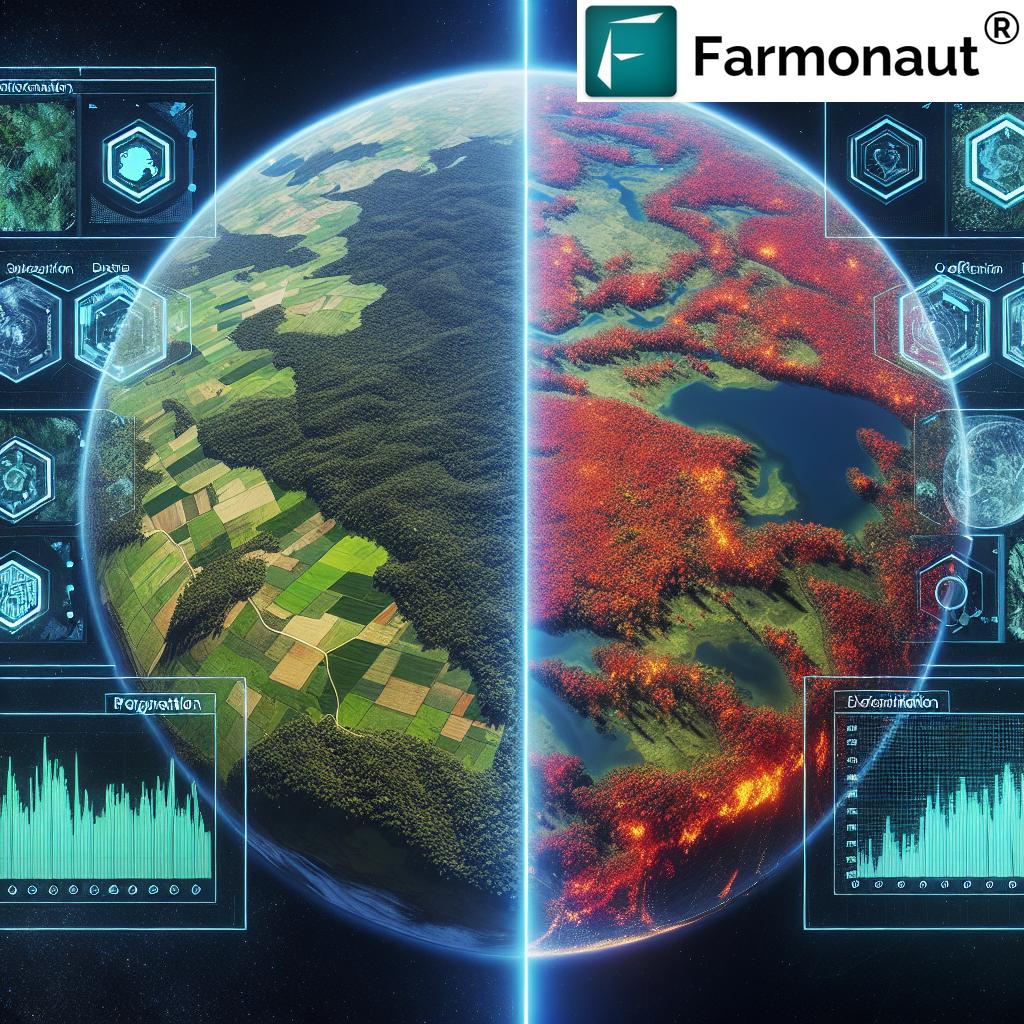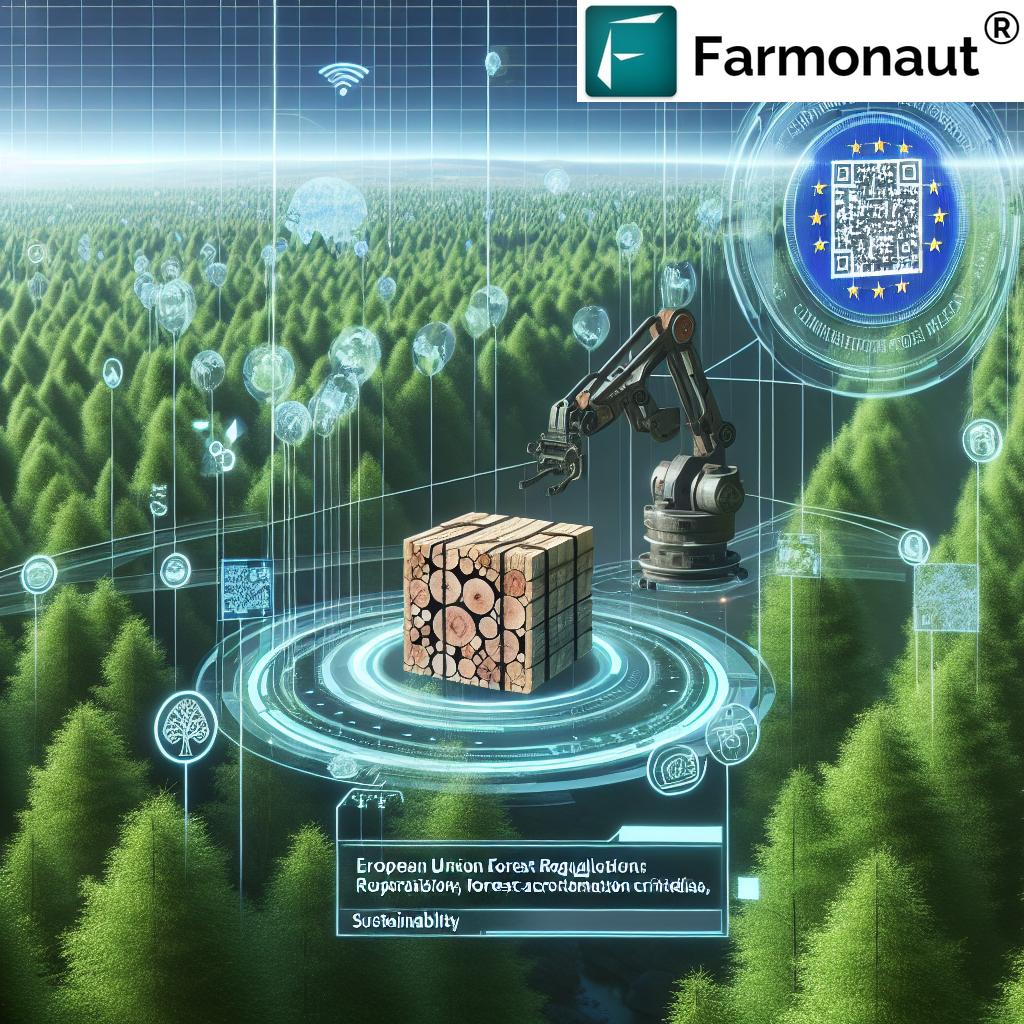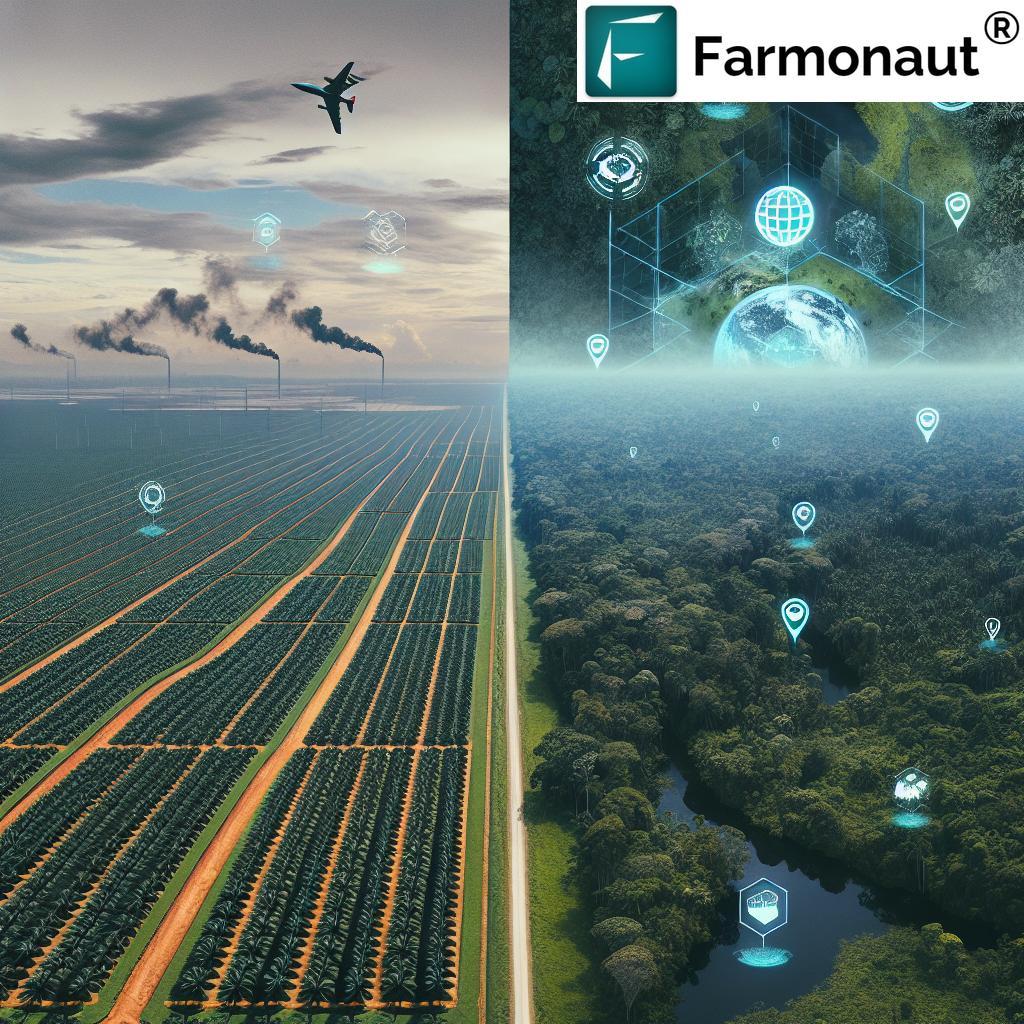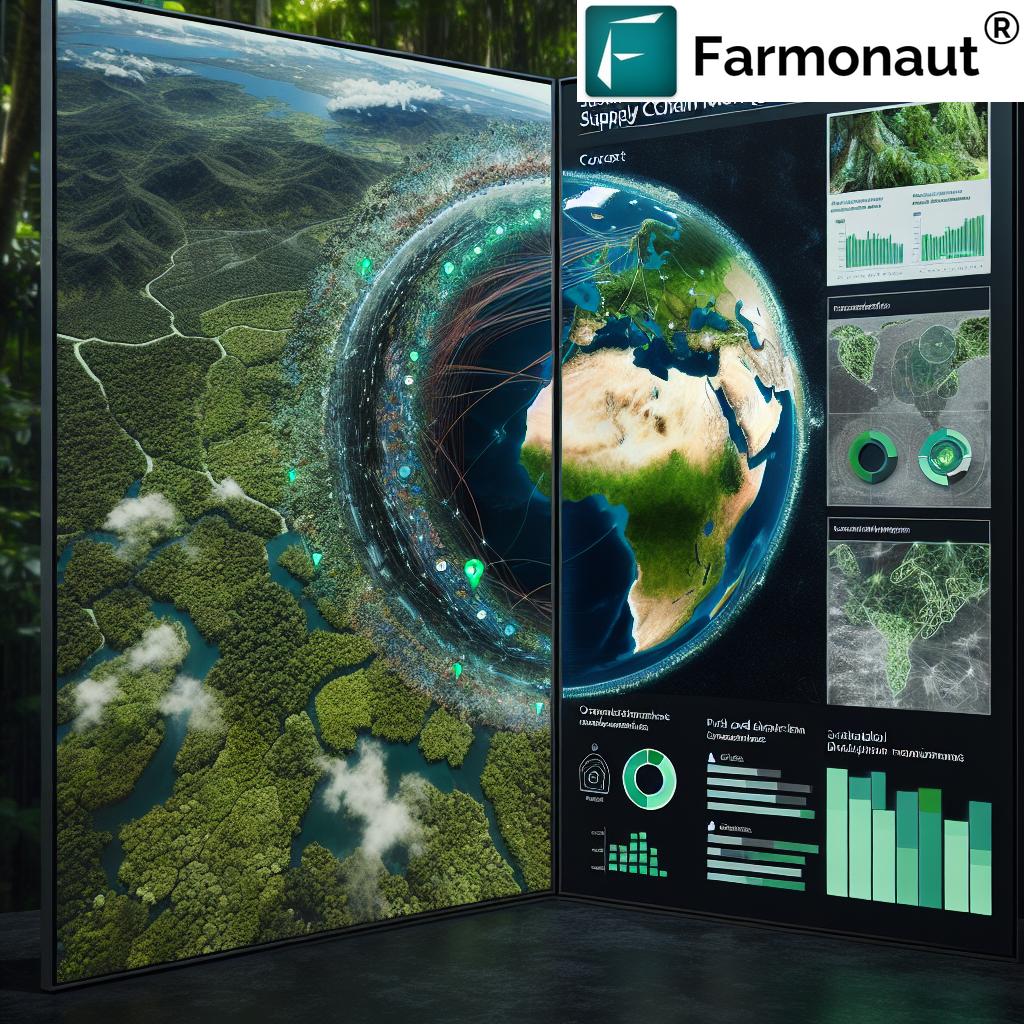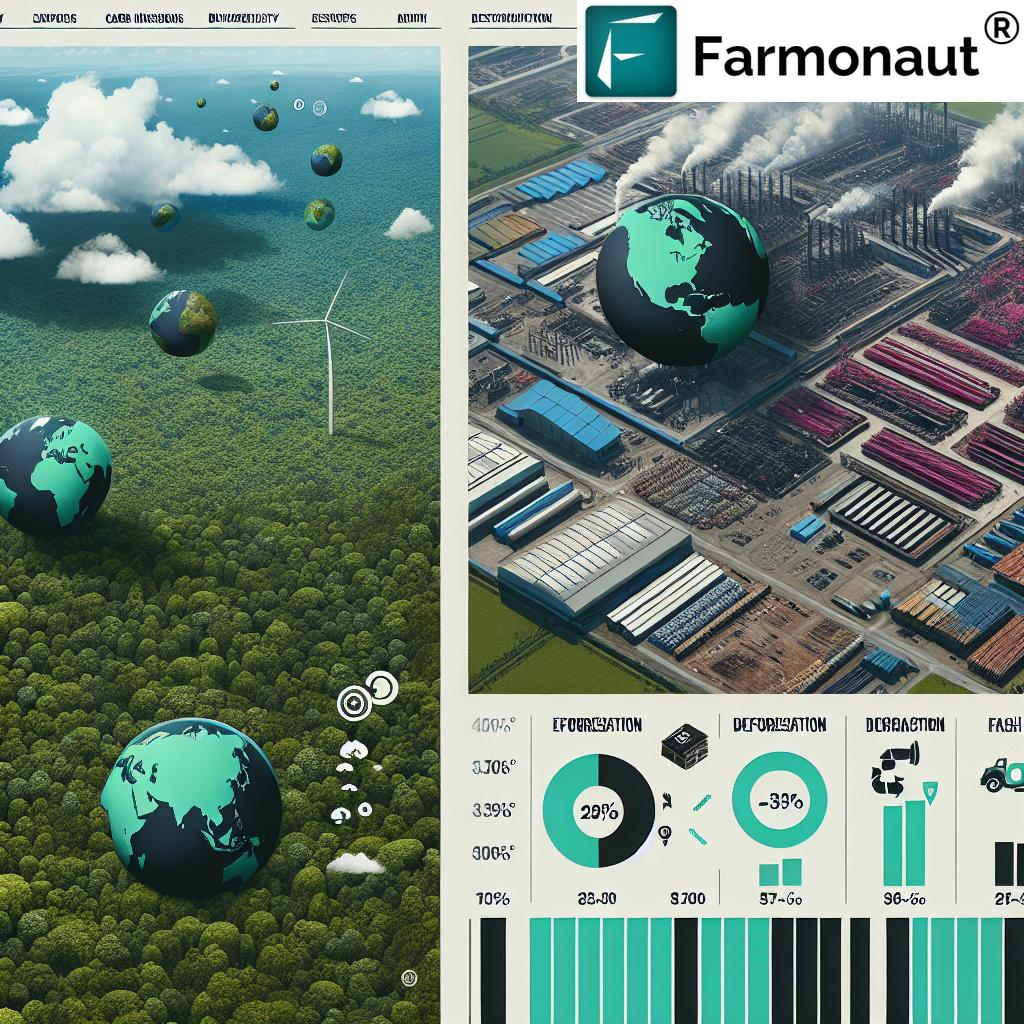Revolutionizing Sustainable Forest Management: Farmonaut’s Satellite Technology Meets EU Deforestation Regulation
“The EU Deforestation Regulation impacts over 1 million square kilometers of global forest area, equivalent to the size of Egypt.”
In an era where environmental sustainability is paramount, the intersection of innovative technology and progressive policies is reshaping the landscape of forest management. As we delve into this transformative journey, we’ll explore how Farmonaut’s cutting-edge satellite technology is aligning with the EU Deforestation Regulation to forge a new path in sustainable forestry practices.
The Changing Face of Forest Management
Sustainable forest management has become a critical global priority, driven by the urgent need to combat climate change, preserve biodiversity, and ensure the long-term viability of our planet’s green lungs. The introduction of the EU Deforestation Regulation marks a significant milestone in this endeavor, setting new standards for responsible land use and environmental stewardship.
At the heart of this revolution is the integration of advanced technologies, particularly satellite forest monitoring systems. These tools are providing unprecedented insights into forest health, cover changes, and the impact of human activities on woodland ecosystems.
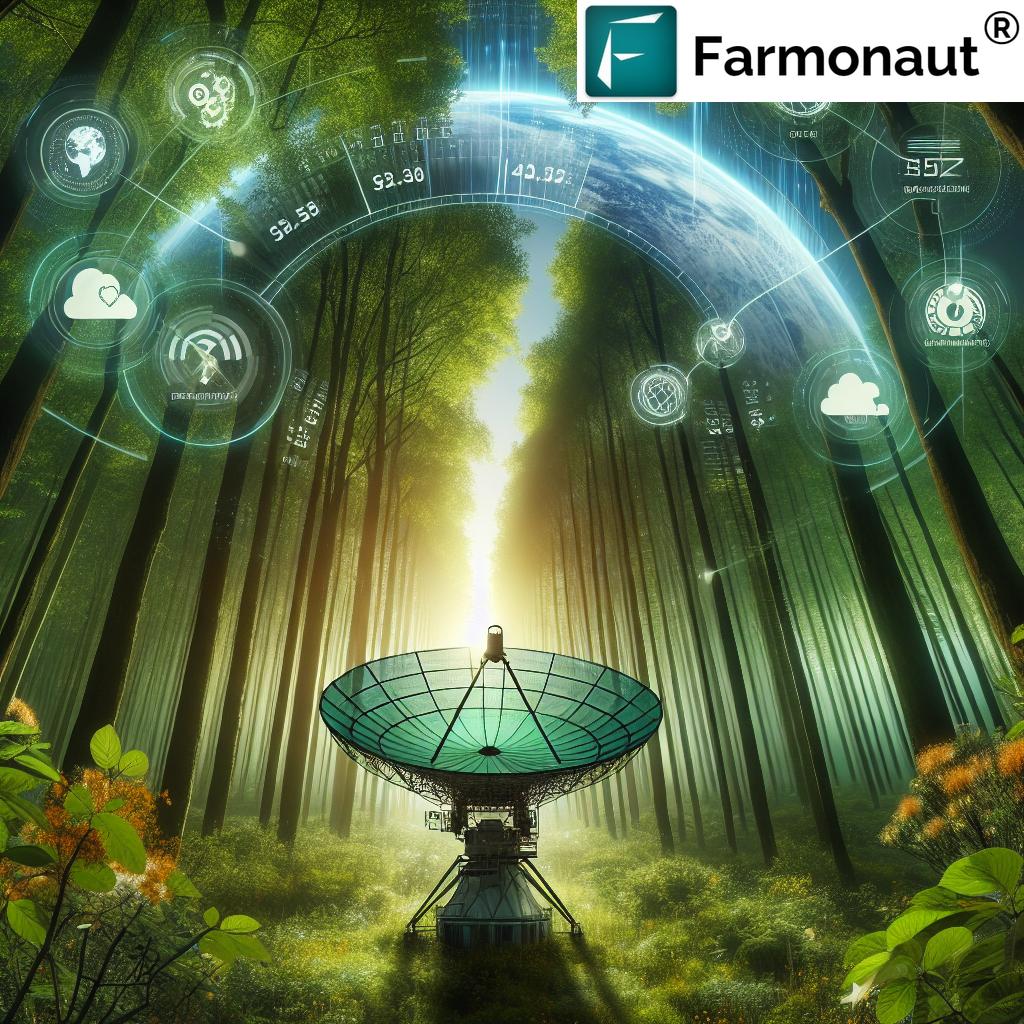
Farmonaut: Pioneering Satellite Solutions for Forestry
In this dynamic landscape, Farmonaut emerges as a game-changer. While primarily known for its agricultural solutions, Farmonaut’s satellite-based technology is proving equally transformative in the realm of forest management. By leveraging advanced satellite imagery and AI-driven analytics, Farmonaut offers forest managers and policymakers powerful tools to monitor, analyze, and protect vast forest areas with unprecedented accuracy and efficiency.
Key features of Farmonaut’s technology in forest management include:
- Real-time monitoring of forest cover changes
- AI-powered detection of illegal logging activities
- Assessment of forest health and biodiversity
- Tracking of carbon sequestration in forest ecosystems
These capabilities align perfectly with the goals of the EU Deforestation Regulation, providing the transparency and data-driven insights necessary for effective implementation.
The EU Deforestation Regulation: A New Era in Forest Protection
The EU Deforestation Regulation represents a landmark shift in global forest conservation efforts. It aims to minimize the EU’s contribution to deforestation and forest degradation worldwide by setting strict requirements for products entering the EU market. This regulation covers a wide range of commodities and derived products associated with deforestation, including:
- Cattle
- Cocoa
- Coffee
- Palm oil
- Soya
- Wood
- Rubber
- Charcoal
- Printed paper products
The regulation mandates that these products must be “deforestation-free,” meaning they were not produced on land deforested or degraded after December 31, 2020. This bold move sets a new global standard for responsible sourcing and sustainable land use practices.
Synergy Between Satellite Technology and Regulation
The marriage of Farmonaut’s satellite technology with the EU Deforestation Regulation creates a powerful synergy in the fight against global deforestation. Here’s how:
- Enhanced Monitoring Capabilities: Farmonaut’s satellite imagery provides continuous, large-scale monitoring of forest areas, enabling real-time detection of deforestation activities.
- Data-Driven Compliance: The detailed data and analytics offered by Farmonaut help businesses and governments ensure compliance with the EU regulation’s stringent requirements.
- Transparent Supply Chains: By integrating blockchain technology, Farmonaut facilitates transparent and traceable supply chains, a crucial aspect of the EU regulation.
- Biodiversity Protection: Advanced analytics help identify and protect High Conservation Value (HCV) ecosystems, aligning with the regulation’s emphasis on biodiversity preservation.
Revolutionizing Forest Certification Standards
The integration of satellite technology is not only aiding compliance with the EU Deforestation Regulation but also revolutionizing forest certification standards. Traditional certification processes often relied on periodic, on-ground assessments, which were time-consuming and sometimes inaccurate. With Farmonaut’s satellite monitoring capabilities, certification bodies can now:
- Conduct more frequent and accurate assessments
- Verify compliance with sustainable forestry practices in real-time
- Identify potential issues before they escalate
- Provide more reliable and transparent certification processes
This technological leap forward enhances the credibility and effectiveness of forest certification programs, ultimately leading to better-managed forests and more sustainable wood products.
“Satellite forest monitoring can detect changes in forest cover with up to 95% accuracy, revolutionizing sustainable management practices.”
The Role of Blockchain in Forest Stewardship
Blockchain technology, a key component of Farmonaut’s suite of solutions, is playing an increasingly vital role in forest stewardship. By creating an immutable record of forest management activities and supply chain transactions, blockchain offers unprecedented transparency and traceability. This technology addresses several critical aspects of sustainable forest management:
- Supply Chain Integrity: Every step of the timber’s journey from forest to end-user can be tracked and verified.
- Combating Illegal Logging: The transparent nature of blockchain makes it significantly harder to introduce illegally sourced timber into the supply chain.
- Certification Verification: Blockchain can store and validate forest certification data, making it easier for buyers to verify the sustainability credentials of wood products.
- Carbon Credit Tracking: As forests play a crucial role in carbon sequestration, blockchain can help in accurately tracking and trading carbon credits.
By integrating blockchain technology, Farmonaut is not only enhancing the traceability of forest products but also contributing to the overall integrity and sustainability of global forestry practices.
Explore Farmonaut’s API for Advanced Forest Monitoring
High Conservation Value Ecosystems: A Priority in Modern Forestry
The concept of High Conservation Value (HCV) ecosystems has gained significant traction in sustainable forest management. These areas are critical for maintaining biodiversity, ecosystem services, and cultural values. Farmonaut’s satellite technology plays a crucial role in identifying, monitoring, and protecting HCV areas:
- Accurate Mapping: Satellite imagery allows for precise mapping of HCV areas, including rare habitats and ecosystems.
- Monitoring Changes: Regular satellite monitoring can detect changes in HCV areas, allowing for quick intervention if threats arise.
- Supporting Conservation Efforts: Data from satellite monitoring supports conservation planning and implementation of protective measures.
- Enhancing Biodiversity Studies: Satellite data combined with on-ground observations provide a comprehensive view of biodiversity in HCV areas.
By prioritizing the protection of HCV ecosystems, we ensure that forest management practices not only meet economic needs but also preserve the invaluable ecological and cultural services that forests provide.

Sustainable Intensification in Forestry: Balancing Production and Conservation
As global demand for wood products continues to rise, the concept of sustainable intensification in forestry has become increasingly important. This approach aims to increase productivity while minimizing environmental impact. Farmonaut’s technology supports sustainable intensification through:
- Precision Forestry: Using satellite data to optimize planting, harvesting, and management practices.
- Resource Efficiency: Identifying areas where interventions can improve forest health and productivity.
- Monitoring Forest Health: Early detection of pests, diseases, or stress factors affecting forest growth.
- Optimizing Land Use: Identifying the most suitable areas for different forestry practices to maximize yield sustainably.
By embracing sustainable intensification, we can meet the growing demand for forest products while preserving natural forests and their biodiversity.
Access Farmonaut’s API Developer Docs for In-depth Insights
Collaborative Efforts in Forest Management
The complex challenges of sustainable forest management require collaborative efforts between various stakeholders. NGOs, governments, and businesses are increasingly working together to implement effective forest management strategies. Farmonaut’s technology facilitates this collaboration by:
- Providing a Common Data Platform: Stakeholders can access and share standardized forest data.
- Facilitating Cross-Border Cooperation: Satellite monitoring transcends national boundaries, enabling regional forest management initiatives.
- Supporting Policy Implementation: Data-driven insights help in formulating and implementing effective forest policies.
- Enhancing Transparency: Open access to forest data promotes accountability and trust among stakeholders.
These collaborative efforts, powered by innovative technology, are crucial for addressing global challenges like climate change and biodiversity loss.
Impact on the Wood Products Market
The implementation of the EU Deforestation Regulation, coupled with advanced monitoring technologies, is significantly impacting the wood products market. Key changes include:
- Increased Demand for Certified Products: Consumers and businesses are prioritizing sustainably sourced wood products.
- Price Premiums for Sustainable Wood: Products that meet stringent sustainability criteria often command higher prices.
- Market Access Challenges: Suppliers unable to meet new standards may face difficulties accessing EU markets.
- Innovation in Wood Alternatives: The regulations are spurring research into sustainable alternatives to traditional wood products.
These market shifts are driving positive changes in forest management practices globally, encouraging more sustainable and responsible forestry.
Future of Forest Resources: Challenges and Opportunities
As we look to the future of forest resources, we face both challenges and opportunities:
Challenges:
- Climate Change Impact: Adapting forest management practices to changing climatic conditions.
- Balancing Conservation and Economic Needs: Finding sustainable ways to meet growing demand for wood products.
- Technological Adoption: Ensuring widespread adoption of advanced monitoring technologies in diverse global contexts.
- Policy Harmonization: Aligning forest management policies across different regions and countries.
Opportunities:
- Technological Advancements: Continued improvements in satellite technology and AI for more effective forest monitoring.
- Green Economy Growth: Expanding markets for sustainable forest products and ecosystem services.
- Biodiversity Conservation: Enhanced ability to protect and restore critical forest ecosystems.
- Carbon Market Potential: Forests as a key player in carbon sequestration and climate change mitigation efforts.
By addressing these challenges and leveraging opportunities, we can ensure a sustainable future for our global forest resources.
Social and Environmental Responsibility in Forestry
The evolving landscape of forest management places increased emphasis on social and environmental responsibility. This shift is reflected in several key areas:
- Indigenous Rights: Recognizing and respecting the rights of indigenous communities in forest management decisions.
- Community Engagement: Involving local communities in forest management practices and benefit-sharing.
- Ecosystem Services Valuation: Recognizing the economic value of non-timber forest services like water regulation and carbon sequestration.
- Biodiversity Conservation: Implementing management practices that prioritize the preservation of forest biodiversity.
Farmonaut’s technology supports these initiatives by providing data that helps in making informed decisions that balance social, environmental, and economic considerations.
Farmonaut’s Contribution to Sustainable Forest Management
Farmonaut’s innovative solutions are making significant contributions to the shifting landscape of forest management:
- Real-time Monitoring: Providing up-to-date information on forest cover changes and health.
- Data-Driven Decision Making: Offering insights that enable forest managers to make informed, sustainable choices.
- Compliance Support: Assisting businesses and governments in meeting EU Deforestation Regulation requirements.
- Transparency Enhancement: Improving supply chain visibility through blockchain integration.
- Resource Optimization: Helping to identify areas for sustainable intensification and conservation.
By leveraging these technologies, Farmonaut is at the forefront of promoting sustainable practices and environmental stewardship in forestry.
Comparative Analysis of Sustainable Forest Management Practices
| Forest Management Aspect | Traditional Approach | Sustainable Approach with Satellite Technology | Environmental Impact | Compliance with EU Deforestation Regulation |
|---|---|---|---|---|
| Monitoring forest cover | Periodic ground surveys | Real-time satellite monitoring | High improvement | Fully compliant |
| Detecting illegal logging | Reactive, based on reports | Proactive, AI-driven detection | Significant reduction in illegal activities | Exceeds compliance requirements |
| Assessing biodiversity | Limited, localized studies | Comprehensive, large-scale analysis | Enhanced biodiversity protection | Strongly supports compliance |
| Managing HCV areas | Basic mapping and occasional monitoring | Precise mapping and continuous monitoring | Improved conservation of critical ecosystems | Fully aligned with regulation goals |
| Tracking carbon sequestration | Estimated based on limited data | Accurate measurement using advanced algorithms | More effective climate change mitigation | Supports broader environmental objectives |
| Implementing sustainable intensification | Generic, broad-scale approaches | Precision forestry techniques | Optimized resource use, reduced environmental impact | Aligns with sustainable production goals |
| Ensuring supply chain transparency | Paper-based, prone to errors | Blockchain-enabled, fully traceable | Reduced risk of sourcing from deforested areas | Essential for demonstrating compliance |
FAQs on Sustainable Forest Management and Satellite Technology
- Q: How does satellite technology improve forest monitoring?
A: Satellite technology provides real-time, large-scale monitoring of forest areas, enabling quick detection of changes in forest cover, health, and potential illegal activities. It offers a more comprehensive and frequent assessment compared to traditional ground-based methods. - Q: What is the EU Deforestation Regulation, and how does it impact forest management?
A: The EU Deforestation Regulation is a set of rules aimed at preventing products linked to deforestation from entering the EU market. It impacts forest management by setting strict requirements for traceability and sustainability in the production of certain commodities, encouraging more responsible forest practices globally. - Q: How does Farmonaut’s technology contribute to sustainable forest management?
A: Farmonaut’s satellite-based technology provides advanced monitoring capabilities, AI-driven analytics, and blockchain-enabled traceability. These tools help in real-time forest monitoring, detecting illegal activities, assessing forest health, and ensuring transparent supply chains, all of which are crucial for sustainable forest management. - Q: What are High Conservation Value (HCV) ecosystems, and why are they important?
A: HCV ecosystems are areas of forest that possess exceptional or critical ecological attributes, ecosystem services, and social and cultural values. They are important for maintaining biodiversity, protecting rare species, and preserving essential ecosystem functions. - Q: How does blockchain technology enhance forest stewardship?
A: Blockchain technology creates an immutable record of forest management activities and supply chain transactions. This enhances transparency, traceability, and trust in the forestry sector, making it easier to verify the sustainability credentials of wood products and combat illegal logging.
Conclusion: A New Era in Forest Management
As we navigate the complexities of sustainable forest management in the 21st century, the synergy between advanced technologies like Farmonaut’s satellite monitoring systems and progressive policies such as the EU Deforestation Regulation marks a new era in our stewardship of the world’s forests. This integration of innovation and regulation offers unprecedented opportunities to protect our forest resources, combat climate change, and ensure the sustainable production of wood products.
The journey towards truly sustainable forest management is ongoing, requiring continuous adaptation, collaboration, and innovation. As we look to the future, the role of technologies like those offered by Farmonaut will be increasingly crucial in balancing the needs of our growing global population with the imperative of preserving our planet’s vital forest ecosystems.
By embracing these technological advancements and aligning them with forward-thinking policies, we can forge a path towards a future where our forests thrive, biodiversity is protected, and the wood products we use are sourced responsibly. This is not just an environmental imperative but a commitment to the sustainable development of our planet for generations to come.



